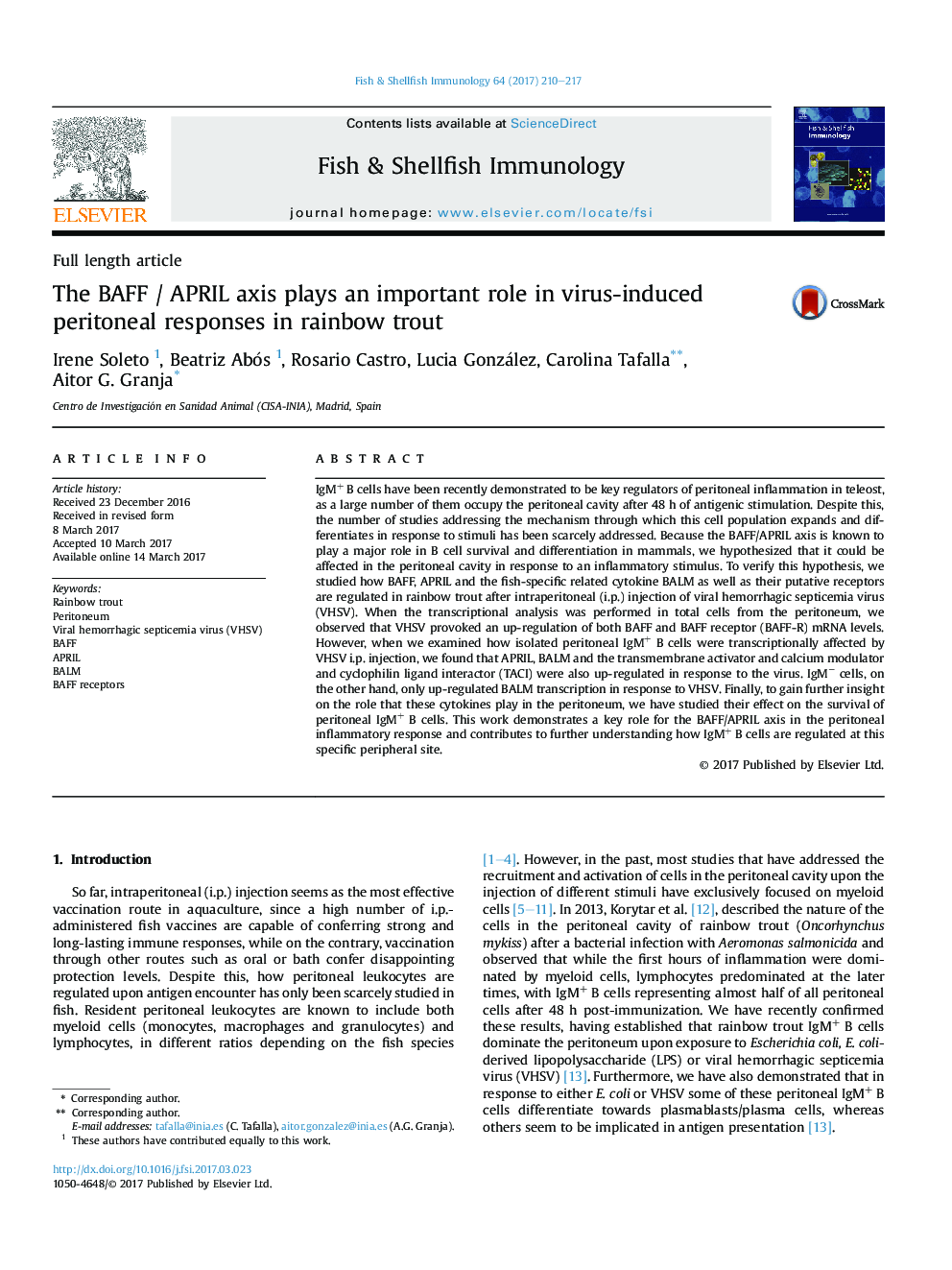| Article ID | Journal | Published Year | Pages | File Type |
|---|---|---|---|---|
| 5540515 | Fish & Shellfish Immunology | 2017 | 8 Pages |
Abstract
IgM+ B cells have been recently demonstrated to be key regulators of peritoneal inflammation in teleost, as a large number of them occupy the peritoneal cavity after 48Â h of antigenic stimulation. Despite this, the number of studies addressing the mechanism through which this cell population expands and differentiates in response to stimuli has been scarcely addressed. Because the BAFF/APRIL axis is known to play a major role in B cell survival and differentiation in mammals, we hypothesized that it could be affected in the peritoneal cavity in response to an inflammatory stimulus. To verify this hypothesis, we studied how BAFF, APRIL and the fish-specific related cytokine BALM as well as their putative receptors are regulated in rainbow trout after intraperitoneal (i.p.) injection of viral hemorrhagic septicemia virus (VHSV). When the transcriptional analysis was performed in total cells from the peritoneum, we observed that VHSV provoked an up-regulation of both BAFF and BAFF receptor (BAFF-R) mRNA levels. However, when we examined how isolated peritoneal IgM+ B cells were transcriptionally affected by VHSV i.p. injection, we found that APRIL, BALM and the transmembrane activator and calcium modulator and cyclophilin ligand interactor (TACI) were also up-regulated in response to the virus. IgMâ cells, on the other hand, only up-regulated BALM transcription in response to VHSV. Finally, to gain further insight on the role that these cytokines play in the peritoneum, we have studied their effect on the survival of peritoneal IgM+ B cells. This work demonstrates a key role for the BAFF/APRIL axis in the peritoneal inflammatory response and contributes to further understanding how IgM+ B cells are regulated at this specific peripheral site.
Related Topics
Life Sciences
Agricultural and Biological Sciences
Aquatic Science
Authors
Irene Soleto, Beatriz Abós, Rosario Castro, Lucia González, Carolina Tafalla, Aitor G. Granja,
